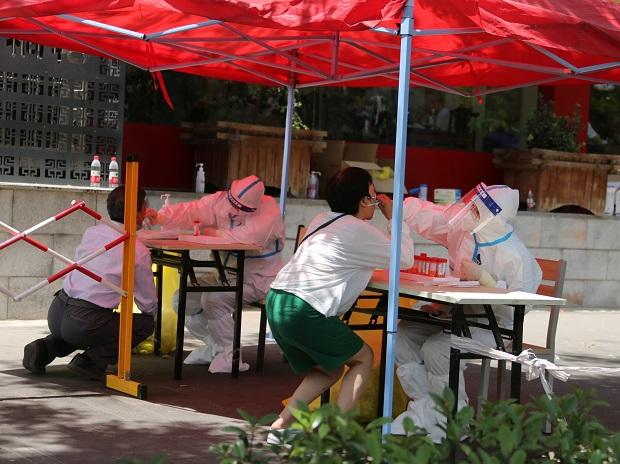[ad_1]
A rapid surge in coronavirus cases in China, after the country abruptly ended its controversial “Zero-Covid” approach to tame the virus, has triggered fears across the world of another possible wave. While it is difficult to say how China’s deteriorating situation will impact health concerns across the world, several countries have started prepping including India where authorities have been conducting mock drills at hospitals and medical colleges.
The current rise in cases in China and some European countries is being blamed on the Omicron subvariant BF.7. So far, experts have not determined whether the world, especially India, is at risk. But they say preparing ahead is wise.
In November 2021, the World Health Organisation (WHO) declared that the world was facing a new variant of concern: Omicron. The world saw how it changed the trajectory of the pandemic, overwhelming the health infrastructure across several countries.
Within weeks, WHO identified Omicron as being significantly more transmissible than Delta, which created the most problem in India. Omicron quickly replaced Delta as the dominant variant and several new subvariants of Omicron were later discovered by scientists. BF.7 is one of them.
“Today, there are over 500 sublineages of this variant circulating, but not one has been designated as a new variant of concern,” the WHO said in an update released on November 25.
How Is BF.7 different?
WHO has said the sublineages of Omicron have not been found to be very different from each other. They are all highly transmissible, replicate in the upper respiratory tract, and tend to cause less severe disease compared to previous variants of concern. However, they all have mutations that make them escape built-up immunity more easily.
So far, scientists have found that the symptoms shown by a person infected with BF.7 are not different than those exhibited by other Omicron subvariants. According to ZOE Health Study, which is working to rapidly advance research on Covid-19, the most common Covid-19 symptoms are:
-
Sore throat -
Runny nose -
Blocked nose -
Sneezing -
Cough with or without phlegm -
Headache -
Hoarse voice -
Muscle aches and pains -
Altered sense of smell
But epidemiologists worry that the kind of infection seen in China could change this. They say more infections mean more opportunities for the virus to replicate and come out in new form. It’s difficult to say at this point whether the available vaccines or herd immunity gained so far would be enough to protect us from any possible new variant.
Scientists hope China will share real-time data with the world so that others can study the virus behavior in time and mount a response.
BF.7 and India
The severity of BF.7 variant in India may not be as serious as it is in China, some researchers say.
Vinay K Nandicoori, Director of CSIR- Centre for Cellular and Molecular Biology (CCMB) told PTI, “The severity of the infection is not as much as they used to be with Delta. That’s because of the fact that we do have herd immunity to an extent. Actually we have herd immunity because we are exposed to the other viruses.”
He, however, stressed the need to follow Covid-appropriate behaviour, saying there is always a concern that these variants may have the ability to escape the immunity.
[ad_2]
Source link



